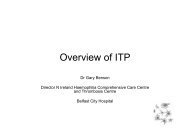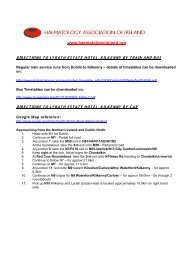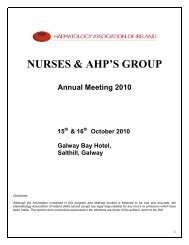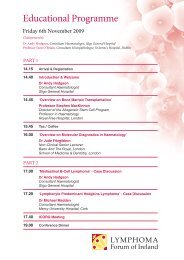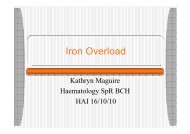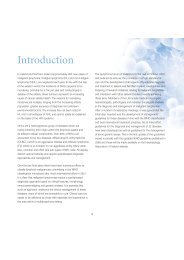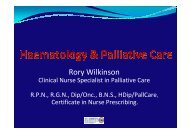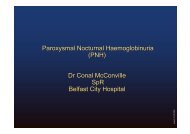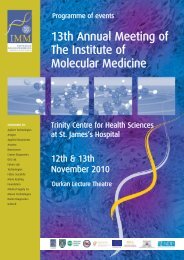Guidelines on Diagnosis and Treatment of Malignant Lymphomas
Guidelines on Diagnosis and Treatment of Malignant Lymphomas
Guidelines on Diagnosis and Treatment of Malignant Lymphomas
You also want an ePaper? Increase the reach of your titles
YUMPU automatically turns print PDFs into web optimized ePapers that Google loves.
Haematopoietic Recombinant<br />
Growth Factor Support<br />
Erythropoietin<br />
Erythropoietin may be used to reduce transfusi<strong>on</strong> requirements in<br />
selected patients with lymphoma undergoing chemotherapy.<br />
Granulocyte col<strong>on</strong>y stimulating factors<br />
Haematopoietic growth factors currently in use include:<br />
Filgrastim - r-met HuG – CSF Neupogen<br />
Lenograstim - r-HuG – CSF Granocyte<br />
Pegylated Filgrastim<br />
Neulasta<br />
Indicati<strong>on</strong>s<br />
Haematopoietic growth factors may be indicated in the following<br />
circumstances <strong>and</strong> are particularly important for maintaining dose<br />
intenstity when chemotherapy is being given with curative intent:<br />
1. Chemotherapy support<br />
2. Peripheral blood stem cell harvest /<br />
progenitor cell mobilisati<strong>on</strong><br />
3. Post peripheral blood stem cell infusi<strong>on</strong><br />
4. Neutropenic sepsis<br />
5. Invasive fungal infecti<strong>on</strong><br />
Chemotherapy Support<br />
Primary prophylaxis<br />
May be used in ‘at risk patients’ or those who have had a<br />
previous episode <strong>of</strong> febrile neutropenia receiving curative<br />
chemotherapy, as recommended below.<br />
At risk patients<br />
■ Patients receiving chemotherapy who are at ‘high risk’<br />
(e.g. ≥ 40% likelihood) <strong>of</strong> developing febrile neutropenia or<br />
infecti<strong>on</strong> e.g.<br />
■<br />
■<br />
■<br />
■<br />
■<br />
Pre-existing neutropenia due to disease<br />
Extensive prior chemotherapy<br />
Previous irradiati<strong>on</strong> to the pelvis or other areas c<strong>on</strong>taining<br />
large amounts <strong>of</strong> b<strong>on</strong>e marrow<br />
History <strong>of</strong> recurrent febrile neutropenia while receiving earlier<br />
chemotherapy <strong>of</strong> similar or lesser dose-intensity<br />
C<strong>on</strong>diti<strong>on</strong>s potentially enhancing the risk <strong>of</strong> serious infecti<strong>on</strong><br />
e.g. poor performance status, decreased immune functi<strong>on</strong>,<br />
open wounds or already active tissue infecti<strong>on</strong><br />
Sec<strong>on</strong>dary prophylaxis –<br />
Previous episode <strong>of</strong> febrile neutropenia<br />
The use <strong>of</strong> GCSF should be c<strong>on</strong>sidered in patients receiving<br />
curative chemotherapy who have had a previous episode <strong>of</strong><br />
febrile neutropenia.<br />
Peripheral blood stem cell harvest<br />
Both Filgrastim <strong>and</strong> Lenograstim may be used for priming (either<br />
al<strong>on</strong>e or in combinati<strong>on</strong> with chemotherapy). The choice <strong>and</strong><br />
dose used depends <strong>on</strong> the protocol for harvesting. Plerixifor<br />
with G-CSF may be used for patients who have failed to achieved<br />
successful mobilisati<strong>on</strong> with c<strong>on</strong>venti<strong>on</strong>al approaches.<br />
70



